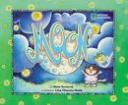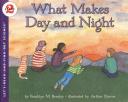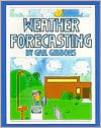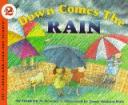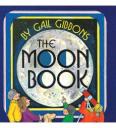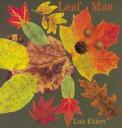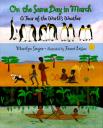
On the Same Day in March: A Tour of the World’s Weather, written by Marilyn Singer and illustrated by Frane Lessac is a colorful and interesting way to introduce an earth science lesson about weather. The book moves from city to city and country to country as it talks about what the climate in each place is like in the middle of the month of March; and although the text is simple, its applications are nearly endless.
The book begins in the Arctic, where “Polar bears ride on floes of ice, stalking seals, wishing fish, as the six-month sun begins to rise slowly in the Arctic skies.” From there, readers travel to Canada, where the March sunlight is quickly melting the snow, and then to Paris, New York City, Texas, Egypt, Louisiana, China (where “In the park the old men and small children guess: What will the wind carry today? Clouds of blue-winged swallows, dust that hurts their eyes, rain from up the mountain, kites shaped like butterflies?”), India, Thailand, Senegal, Barbados, Kenya, Brazil, Australia, Argentina, and Antarctica! The text is beautiful and very descriptive, which make this book great for a read-aloud, but the illustrations are also very detailed, and might inspire in-class dialogue or individual exploration of the pictures by students during silent reading. On the Same Day in March is also chock full of cultural references and even interesting slang from the countries featured, which gives it plenty of applications across the curriculum…
Curriculum Connections
On the Same Day in March can be used for Earth Science SOLs K.8a, 1.7c, and 3.8a, but is also applicable to History and Social Studies SOLs K.4 and 1.6. Both the text and pictures allow the book to be used in a wide variety of lessons, and encourage global awareness by pointing out how everyone around the world has different experiences on the same day. The book is dense because it does have so many applications, but is presented in an easy-to-understand format that will work in most elementary grades. In addition, the illustrations might be a great way to inspire art projects relating to the weather in different parts of the world; and if the pictures were enlarged, a lesson could even be based around the details on each of the pages.
Additional Resources
- Readwritethink.org presents a very complete, six-part lesson plan using this text, among many others, that can be used to cover topics relating to the weather across the world.
- If you’re looking for a great interactive and kid-friendly in-class resource to examine the weather patterns across the world, check out Weather Watch: An Interactive Weather Project. By registering your school, you are immediately connected to a network of schools across the world and can monitor their weather patterns, as well as your own!
- Illustrator Frane Lessac’s webpage is a great resource for teachers to find out more info about this very talented artist, as well as illustrations to print out for the classroom and lesson plans to accompany each of Lessac’s books.
General Information
Book: On the Same Day in March: A Tour of the World’s Weather
Author: Marilyn Singer
Illustrator: Frane Lessac
Publisher: Harper Collins
Publication Date: 2000
Pages: 40
Grade Range: K-4
ISBN: 0064435288


